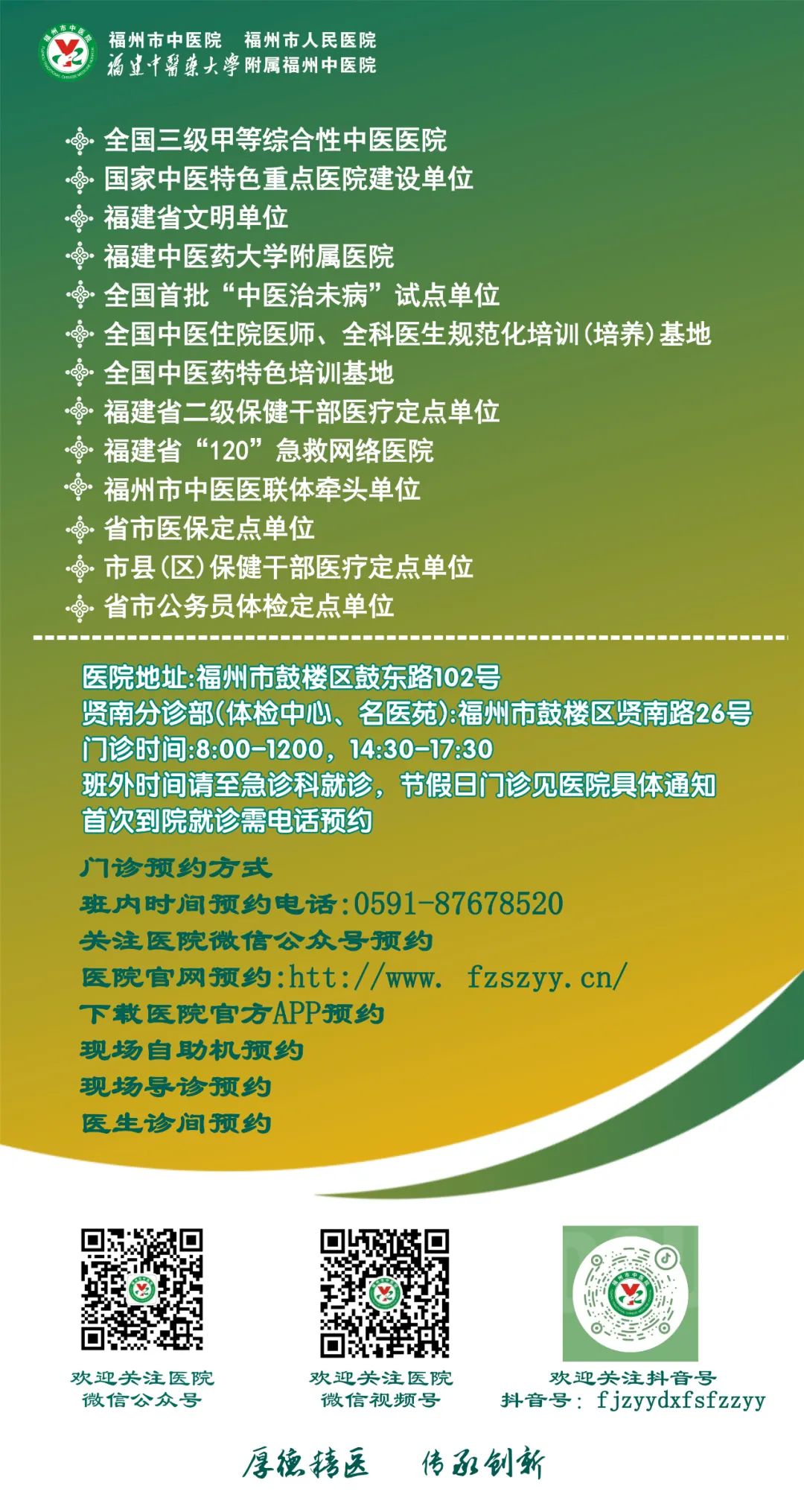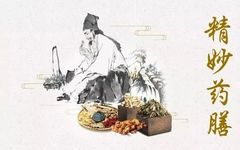
“The Book of the Later Han: Biographies of Women” states, “Mothers adjust medicinal cuisine with deep feelings,” linking “medicine” with “cuisine.” For thousands of years, our ancestors have accumulated rich experiences at the cost of their lives.
Medicinal cuisine is a wonderful combination of traditional Chinese medicine (TCM) and culinary experience, and is one of the treasures of the food therapy culture in TCM. It integrates medicine and food, using medicinal substances as food while endowing food with medicinal properties. The medicinal power is enhanced by food, and food supports the efficacy of medicine, complementing each other and achieving mutual benefits.
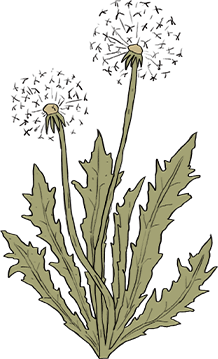
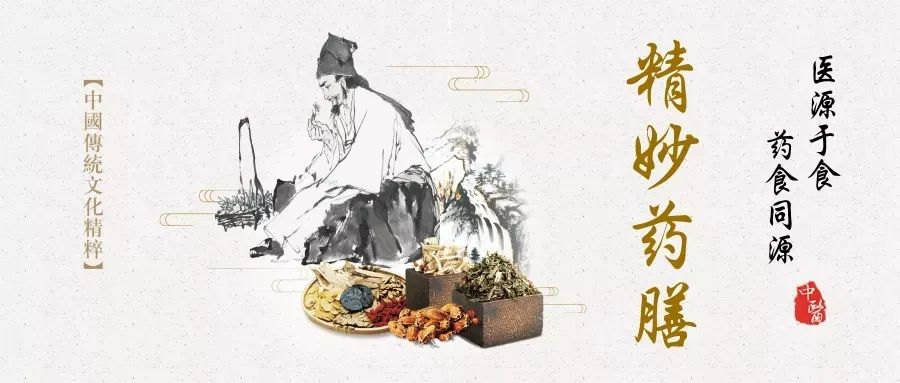
Fuzhou Traditional Chinese Medicine Hospital, affiliated with Fujian University of Traditional Chinese Medicine, has been dedicated to the clinical application of medicinal cuisine, research, development of medicinal cuisine products, clinical efficacy studies, clinical promotion, and health education related to medicinal cuisine. It is the Vice Chair Unit of the Medicinal Cuisine Branch of the Chinese Association of Traditional Chinese Medicine, and the Chair Unit of the Medicinal Cuisine Branch of the Fujian Provincial Association of Traditional Chinese Medicine. “Medicinal Cuisine” is a provincial key specialty in TCM. Our hospital’s Fuzhou Eight Treasures Medicinal Cuisine was approved as the third batch of Fuzhou Intangible Cultural Heritage Projects in 2010.
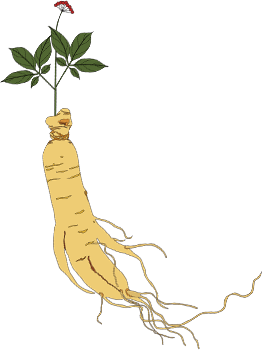
“Eight Treasures Medicinal Cuisine” originated from Liudu Township, Bandong Town, Minqing County (with at least 150 years of documentation in Minqing County), and is popular in Fuzhou city and surrounding counties, widely used in folk applications with good compliance and high usage. Our hospital’s Chief Pharmacist Huang Qiuyun is the inheritor of “Eight Treasures Medicinal Cuisine.”
“Eight Treasures Soup” is a classic ancient formula in TCM, containing the herbs Dang Gui (Angelica Sinensis), Chuan Xiong (Ligusticum Chuanxiong), Bai Shao (White Peony), Shu Di Huang (Rehmannia Glutinosa), Ren Shen (Ginseng) (or Dang Shen (Codonopsis)), Bai Zhu (White Atractylodes), Fu Ling (Poria), and Zhi Gan Cao (Honey-fried Licorice), which has the effect of tonifying Qi and nourishing blood, and is widely used in clinical practice. Eight Treasures Medicinal Cuisine is made by adding ingredients to Eight Treasures Soup, characterized by easy sourcing, simple cooking, and good taste. It is a product of the combination of traditional Chinese medicine knowledge and culinary experience. Eight Treasures Medicinal Cuisine has been passed down through generations in folk culture, reflecting seasonal customs, suitable for practical life, and helps strengthen the body and prolong life, embodying the TCM philosophy of “preventing disease before it occurs.”
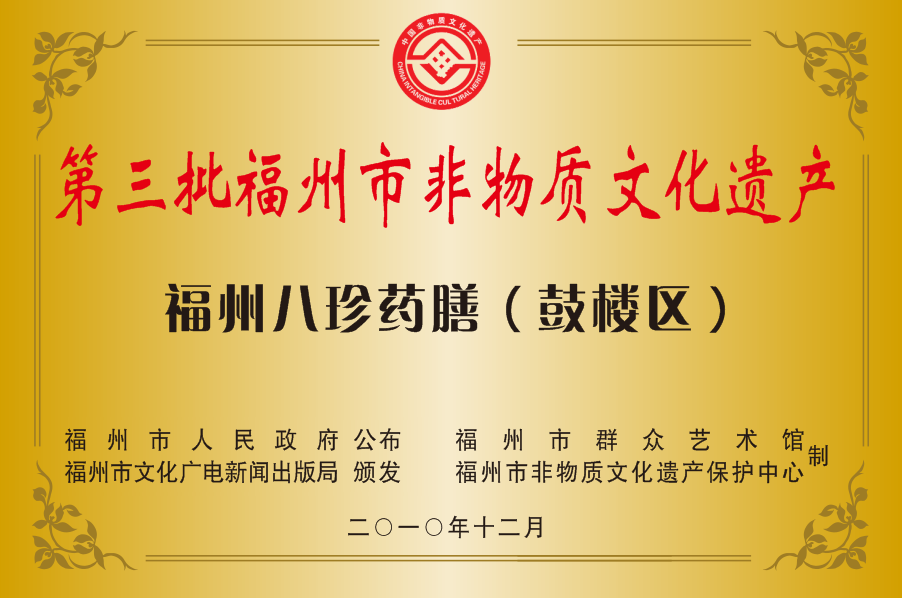
In recent years, our hospital has included the clinical application research of “Eight Treasures Medicinal Cuisine” in medical activities, often preparing “Eight Treasures Medicinal Cuisine Packs” to distribute to the public during free clinics and rural outreach activities; using Eight Treasures Medicinal Cuisine as a must-have for receptions or various academic conferences; and including Eight Treasures Medicinal Cuisine as a key component of TCM cultural activities in schools, creating favorable conditions for the dissemination of Eight Treasures Medicinal Cuisine.
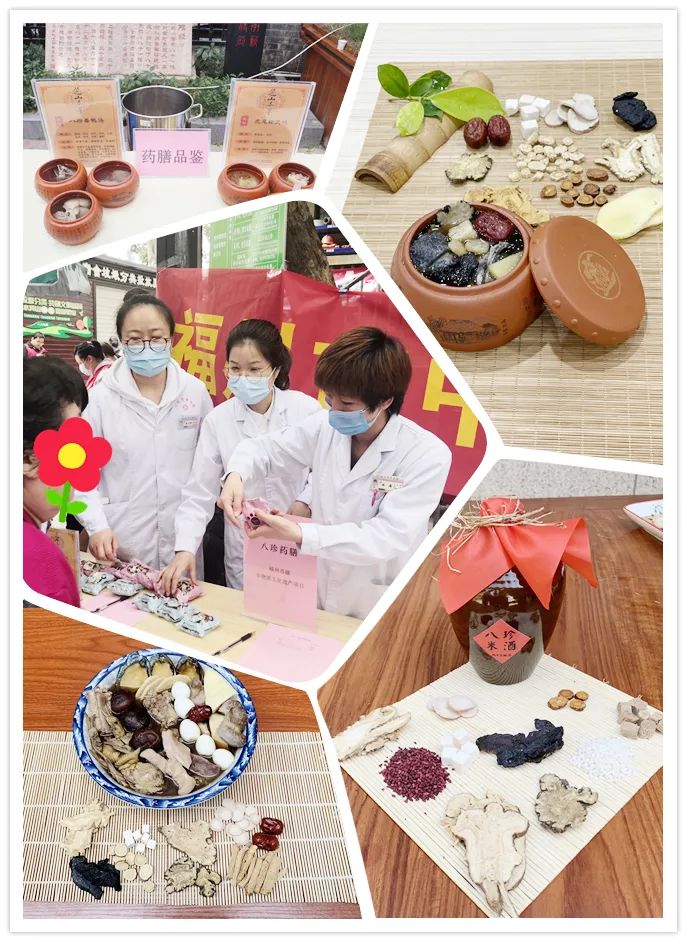
Eight Treasures Medicinal Cuisine
Teaches You How to Make It at Home


Eight Treasures Wine
[Ingredients and Medicinal Materials] Shu Di (Rehmannia Glutinosa) 100g, Dang Gui (Angelica Sinensis) 100g, Bai Shao (White Peony) 100g, Chuan Xiong (Ligusticum Chuanxiong) 100g, Ren Shen (Ginseng) 100g, Bai Zhu (White Atractylodes) 100g, Fu Ling (Poria) 100g, Gan Cao (Licorice) 100g, ginger, jujube, glutinous rice, red yeast rice, spring water, etc. in appropriate amounts.[Cooking Method] Shu Di, Dang Gui, Bai Shao, Chuan Xiong, Ren Shen, Bai Zhu, Fu Ling, Gan Cao, ginger, and jujube are soaked in an appropriate amount of water, boiled to extract the liquid, cooled, and then brewed into rice wine using traditional brewing methods (1000nl).[Application Scope] Tonifies Qi and nourishes blood. Used as a nourishing food for chronic patients with Qi and blood deficiency (such as anemia, leukopenia, thrombocytopenia, and post-hemorrhage), and as a health food for women’s beauty.[Dosage] Once a day, 10ml per dose, can be consumed regularly.

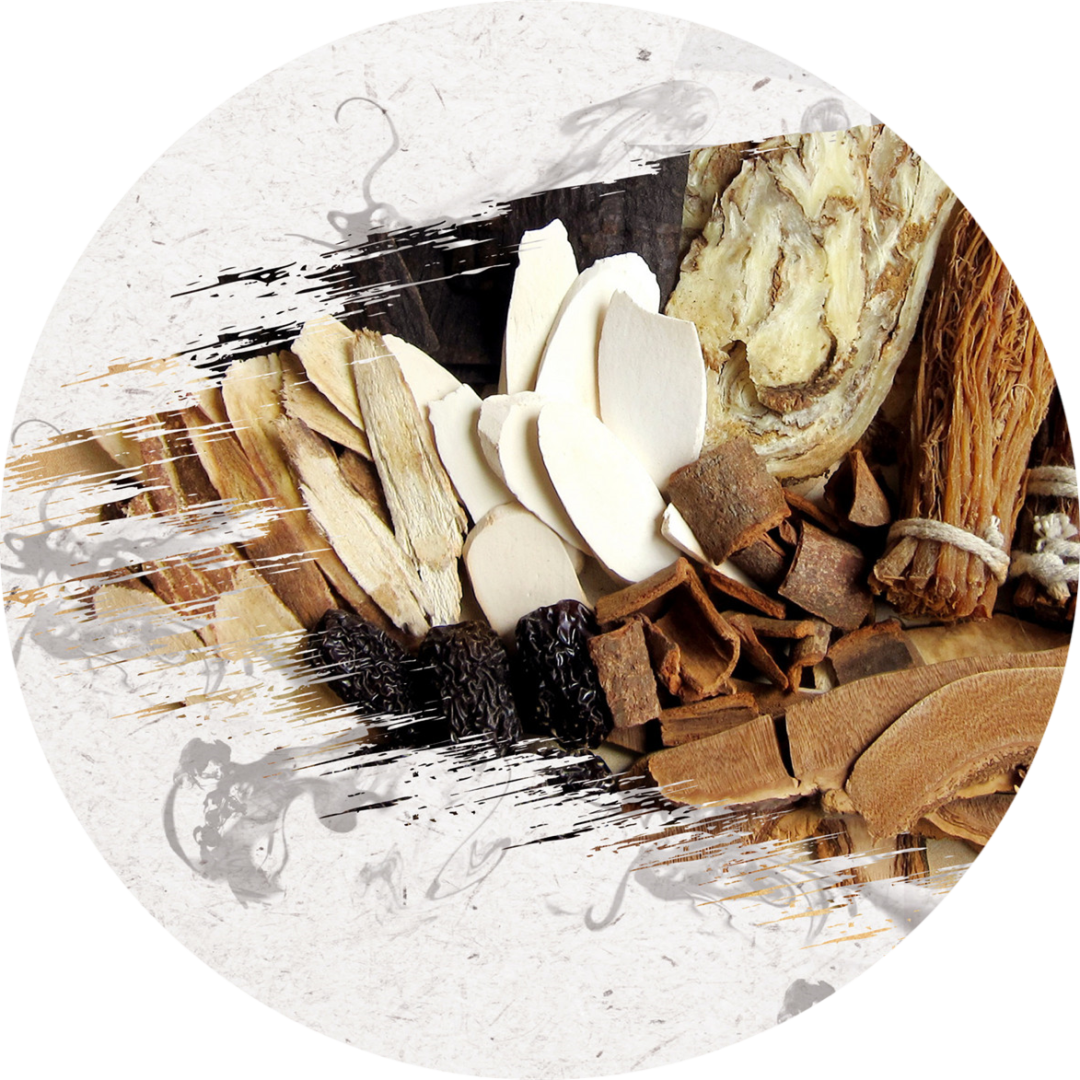


Eight Treasures Pig Stomach
[Ingredients and Medicinal Materials] Shu Di 5g, Dang Gui 5g, Bai Shao 5g, Chuan Xiong 5g, Ren Shen 5g, Bai Zhu 5g, Fu Ling 5g, Gan Cao 5g, pig stomach 50g, ginger 10g, jujube 2 pieces, rice wine, salt, tea oil, and other seasonings in appropriate amounts.
[Cooking Method]Clean the pig stomach and blanch it in boiling water, cut into pieces; soak the medicinal herbs in an appropriate amount of water, boil to extract the liquid, and use it to soak the pig stomach for more than 1 hour, then remove the pig stomach; in a hot oil pan, stir-fry ginger and scallions, add the pig stomach and rice wine, simmer slightly, add the medicinal liquid and jujube, transfer to a stewing pot, and cook until done, adding seasonings.
[Application Scope]Replenishes deficiency and strengthens the spleen and stomach. It has certain dietary therapeutic effects on Qi and blood deficiency, weakness, diarrhea, dysentery, diabetes, frequent urination, and pediatric malnutrition.
[Dosage] Once a day, for 14 consecutive days, can be consumed regularly.


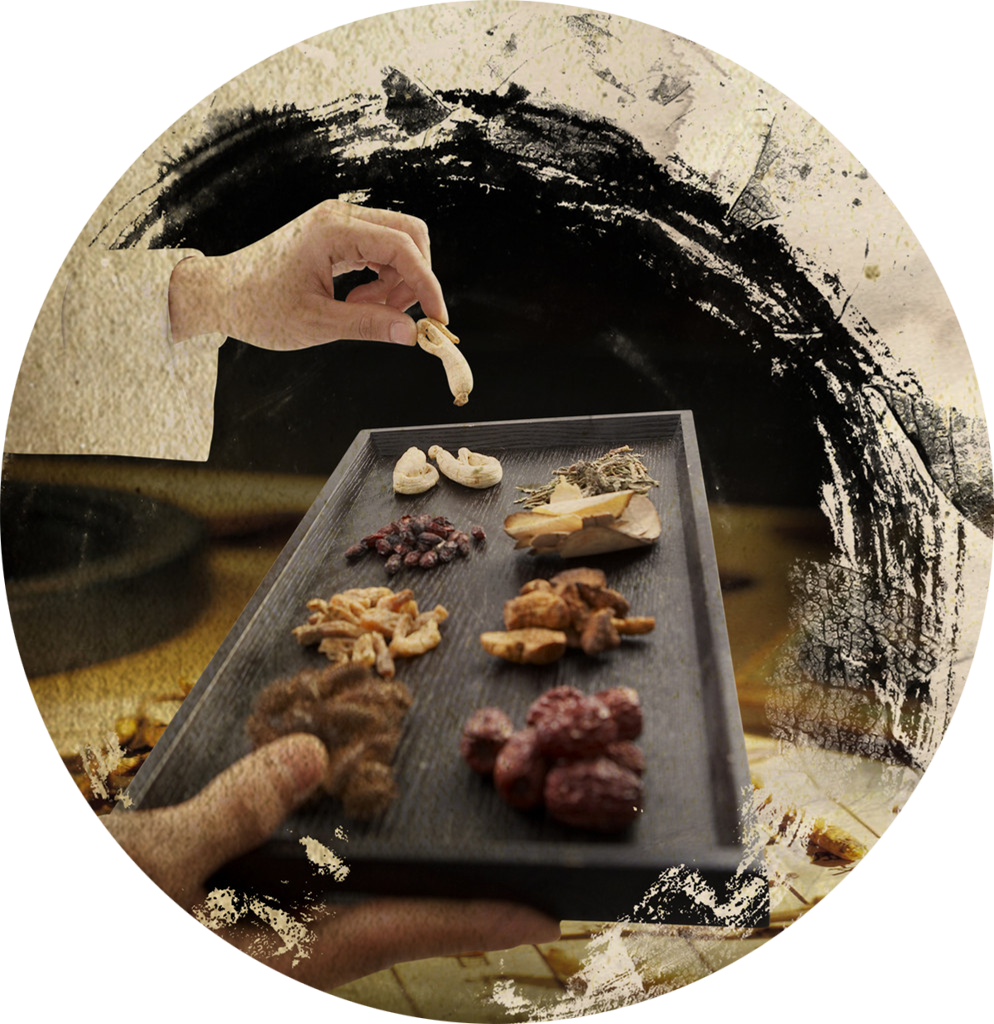


Eight Treasures Duck
[Ingredients and Medicinal Materials] Shu Di 50g, Dang Gui 50g, Bai Shao 50g, Chuan Xiong 50g, Ren Shen 50g, Bai Zhu 50g, Fu Ling 50g, Gan Cao 50g, duck 1, ginger 100g, jujube 20 pieces, rice wine, salt, tea oil, and other seasonings in appropriate amounts.[Cooking Method]Clean the duck and cut into pieces, blanch in boiling water, cut into pieces; soak the medicinal herbs in an appropriate amount of water, boil to extract the liquid, and use it to soak the duck for more than 1 hour, then remove the duck; in a hot oil pan, stir-fry ginger and scallions, add the duck and rice wine, simmer slightly, add the medicinal liquid and jujube, transfer to a pot, and cook until done, adding seasonings.[Application Scope]Tonifies Qi and nourishes blood. Used in folk as a general nourishing medicinal cuisine.[Dosage]Once a day, can be consumed regularly.


Our hospital’s medicinal cuisine team has comprehensively summarized and organized years of clinical medicinal cuisine practice, and has authored works such as “Exploring Medicinal Cuisine of Zuohai” and “Essence of Minshan Medicinal Cuisine”, among which the monograph “Exploring Medicinal Cuisine of Zuohai” won the third prize for academic works from the Chinese Association of Traditional Chinese Medicine.
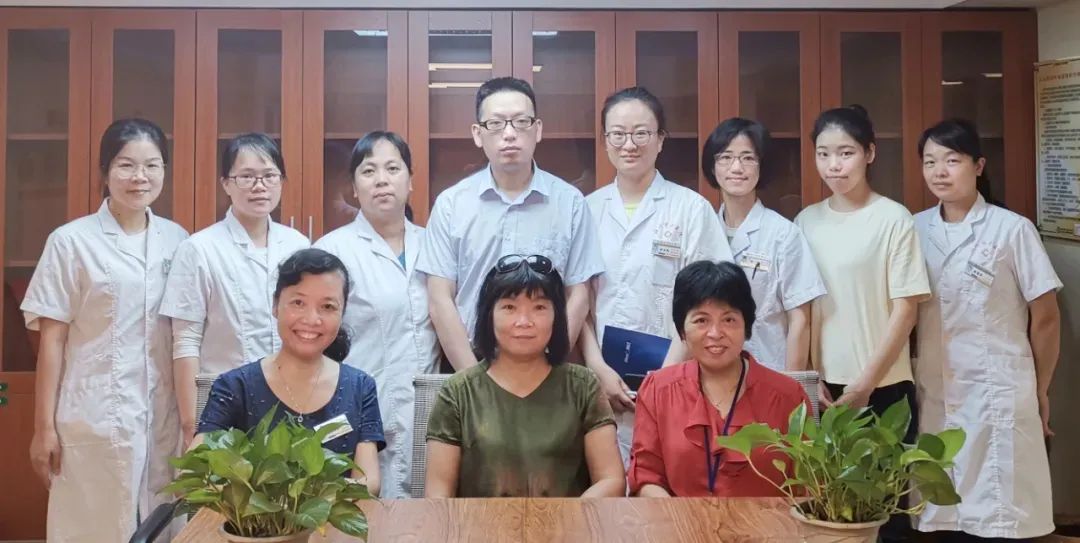 –Huang Qiuyun, National Renowned Expert in Traditional Chinese MedicineGroup photo of the academic experience inheritance workshop team members–
–Huang Qiuyun, National Renowned Expert in Traditional Chinese MedicineGroup photo of the academic experience inheritance workshop team members–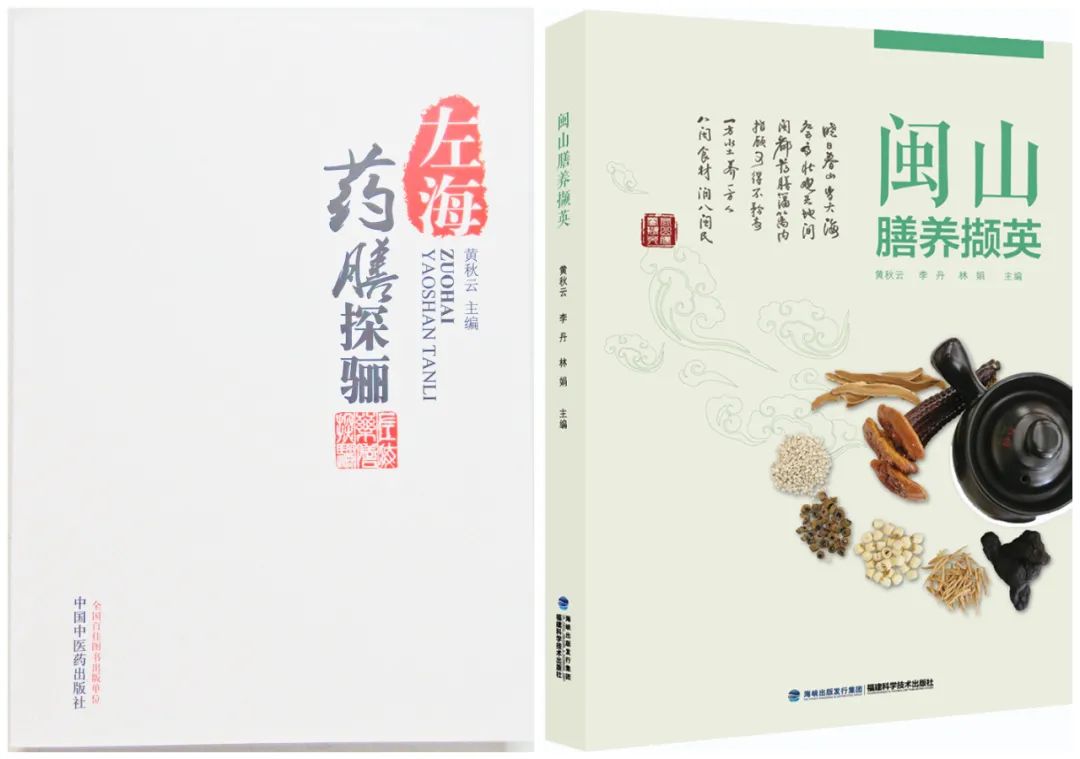

Are you interested in food therapy and medicinal cuisine? Would you like to learn more about medicinal cuisine knowledge? You can leave us a message on WeChat, or come to the medicinal cuisine consultation room next to the Health Care Department on the first floor of the hospital on Monday or Wednesday mornings for on-site consultation, where members of Huang Qiuyun’s national renowned expert academic experience inheritance workshop team will answer your questions.

 This article’s medicinal cuisine recipes are excerpted from the book “Exploring Medicinal Cuisine of Zuohai” edited by Chief Pharmacist Huang Qiuyun.
This article’s medicinal cuisine recipes are excerpted from the book “Exploring Medicinal Cuisine of Zuohai” edited by Chief Pharmacist Huang Qiuyun.
Highlights Recap
▶ Exploring Medicinal Cuisine ┃ Intangible Cultural Heritage Medicinal Cuisine Teaches You How to Make It▶ Exploring Medicinal Cuisine ┃ Friends with Digestive Ulcers, Look Here▶ Exploring Medicinal Cuisine ┃ Protecting the “Stomach” Battle, Let Medicinal Cuisine Help!▶ Exploring Medicinal Cuisine ┃ Fragrant Herbs and Flavors, Medicinal Cuisine for Breast Hyperplasia is Wonderful▶ Exploring Medicinal Cuisine ┃ This Annoying Appendicitis Might Be Eased by Medicinal Cuisine!